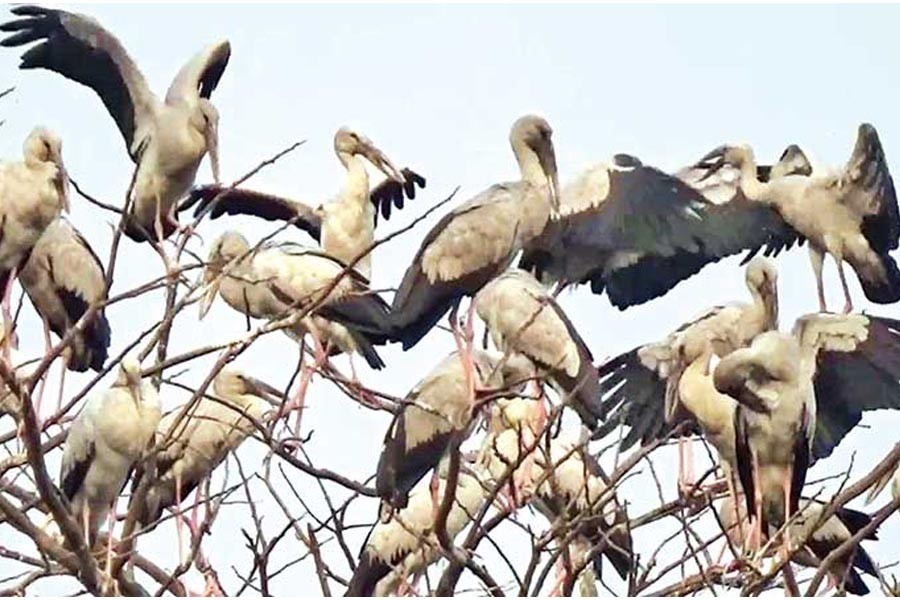
Published :
Updated :

At a time when sea beaches and other tourist spots in Chattogram and Chittagong Hill Tracts (CHT) are making news for heavy crowding by people on their pleasure trips, the flocking of the winged guests at beaches, shores, river banks, lakes, wetlands and forest in the region will warm many a heart. The news carried on the day one of the New Year is certainly a treat for bird lovers, ornithologists and avian scientists who keep track of migration of the guest birds. In fact, this highly populous but small land sits on the Ganges-Brahmaputra-Meghna basin that turns out to be a strategic location or destination between two migratory flyways --- the East Asian Australasian Flyway and the Central Asian Flyway. Thus the diverse ecosystem of this tropical deltaic plain has remained a welcoming host to the birds on their yearly sojourn from as far as 4,000 kilometres in Siberia and other places in the northern hemisphere.
Of the 712 species of birds, 320 are migratory in this country. But not all visit this land in the winter only. Of course, the largest number of water birds ranging between 150,000 to 200,000 make the freshwater wetlands of north-east Bangladesh, larger Sylhet in particular, their temporary abode. The southern coastal areas host 40,000-50,000 such birds. Apart from the water birds, small passerine migratory birds find shelter in forests, reed and grasslands on river banks or islets. While the wetlands such as Baikka Beel have been declared as bird sanctuaries, there are still other such water bodies like Hakaluki and Hail Haors still licensed for fishing that do not help the cause of conservation of bird sanctuaries in a comprehensive manner. If hunting of birds is a direct existential threat to different migratory birds, damage or destruction of their habitats is no less pernicious.
The fact that young people have formed several bird and animal protection clubs which are doing wonderful jobs goes to the credit of Bangladesh. Sure enough, the international cooperation courtesy of the International Union for Conservation of Nature (IUCN) has played an inspirational role in such initiatives. Even a Himalayan vulture can now count on bird clubs' rescuing act and treatment thereafter. Yet the common people till now view migratory birds as a source of meat and enemies to their crops. But if they knew that the migratory birds help increase wetland and farmland productivity as well as fish production by fertilising aquatic vegetation that ensures food and habitat for fish, they would have changed their attitudes towards these winged friends. The birds also help pest control and pollination.
About 25 million birds get killed, mostly during their migration, worldwide. In Bangladesh, the birds get killed, as the IUCN study finds, during their night expedition to croplands from the water bodies where they stay during the daytime. So, the poachers must be stopped by engaging the local community in conservation. But community conservation can be successful only when the local people are convinced of the merit of protecting the birds in the interest of biodiversity without which Nature loses its balance and natural calamities strike putting at risk the entire system of agriculture or food production.


 For all latest news, follow The Financial Express Google News channel.
For all latest news, follow The Financial Express Google News channel.